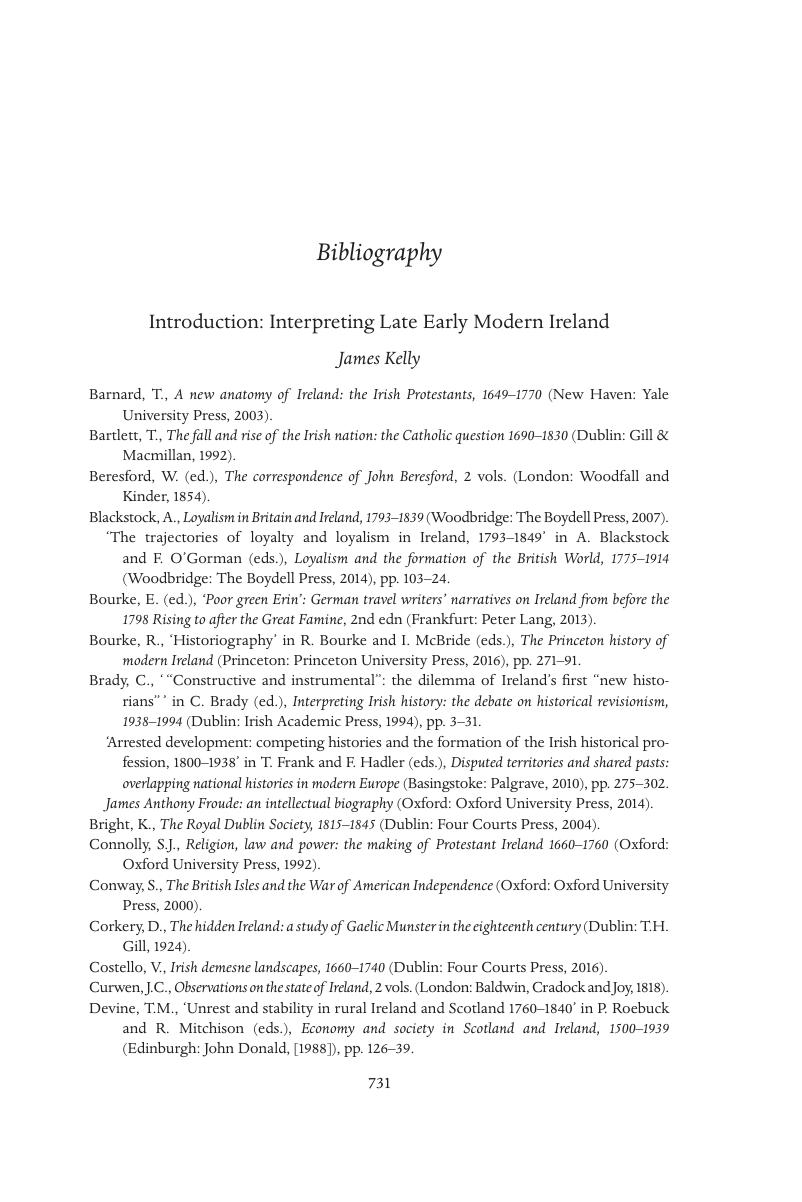Book contents
- The Cambridge History of Ireland
- The Cambridge History of Ireland
- The Cambridge History of Ireland
- Copyright page
- Contents
- Illustrations
- Figures
- Tables
- Maps
- Contributors
- General Acknowledgements
- Acknowledgements
- Abbreviations
- General Introduction
- Map 1. Map of Ireland.
- Introduction: Interpreting Late Early Modern Ireland
- Part I Politics
- Part II Economy and Demography
- Part III Religion
- Part IV Shaping Society
- Part V The Irish Abroad
- Part VI The Great Famine and its Aftermath
- Bibliography
- Index
- References
Bibliography
Published online by Cambridge University Press: 20 April 2018
- The Cambridge History of Ireland
- The Cambridge History of Ireland
- The Cambridge History of Ireland
- Copyright page
- Contents
- Illustrations
- Figures
- Tables
- Maps
- Contributors
- General Acknowledgements
- Acknowledgements
- Abbreviations
- General Introduction
- Map 1. Map of Ireland.
- Introduction: Interpreting Late Early Modern Ireland
- Part I Politics
- Part II Economy and Demography
- Part III Religion
- Part IV Shaping Society
- Part V The Irish Abroad
- Part VI The Great Famine and its Aftermath
- Bibliography
- Index
- References
Summary

- Type
- Chapter
- Information
- The Cambridge History of Ireland , pp. 731 - 814Publisher: Cambridge University PressPrint publication year: 2018



